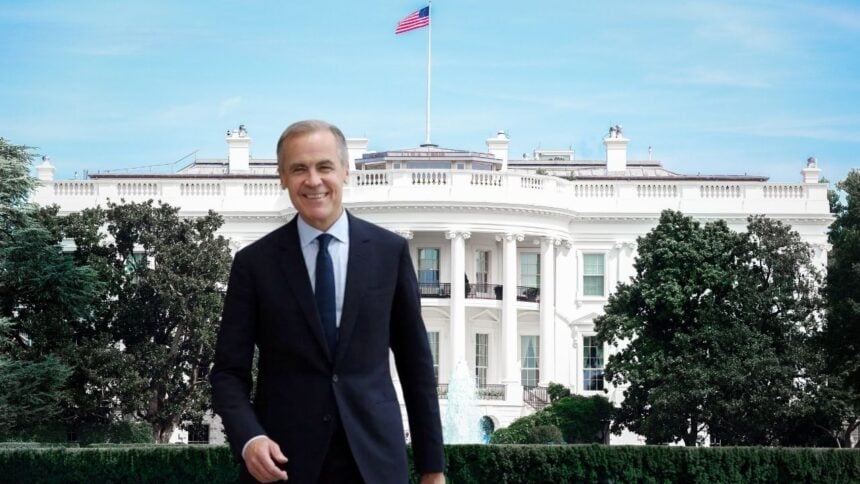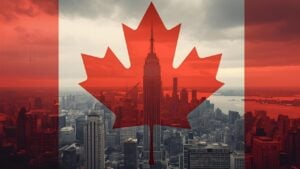Canadian Prime Minister Mark Carney is in Washington on Tuesday for a working session with President Donald Trump that will center on sector-specific tariff relief, the second White House visit in five months for the new Canadian leader.
The talks come as Ottawa looks for narrow breaks for industries such as steel, aluminum, autos, and lumber while preparing for the first joint review of the U.S.-Mexico-Canada Agreement next year.
Officials and analysts caution against expecting a grand bargain, but even small carve-outs could signal a path out of a bruising trade fight. Washington’s tariff regime has reshaped the negotiating landscape.
The administration established a universal baseline tariff this spring under emergency authorities, with additional hikes targeting specific sectors that have hit Canadian producers and smaller suppliers.
The baseline was outlined in a White House fact sheet in April, and higher rates on certain metals and industrial goods have drawn particular ire north of the border.
The goal in this week’s meeting is to secure targeted relief where supply chains are tightly integrated and where tariff costs are most disruptive.
Canada’s calculus is straightforward, more than three quarters of its exports flow to the United States, and the web of cross-border manufacturing that binds the two economies means tariff spikes ripple well beyond headline sectors.
Automakers and parts suppliers have warned that sustained friction could distort investment decisions and erode competitiveness on both sides of the border.
That is why Ottawa has framed the push as a pragmatic hunt for relief in a few pressure points rather than a sweeping reset.
Carney arrives under intensifying domestic pressure to deliver something tangible. Opposition leader Pierre Poilievre urged the prime minister in a public letter to secure relief on softwood lumber and other sectors. “No more losing.
It is time for you to deliver the promised wins,” Poilievre wrote, underscoring the political stakes for a government that unwound counter-tariffs and shelved a digital services tax in a bid to open the door to negotiation.
For the White House, the meeting is a chance to test whether sectoral exemptions can advance U.S. industrial aims without undermining the broader tariff framework.
The administration has set a tough tone in public, and aides have worked to dial back expectations for an immediate breakthrough.
At a May Oval Office availability, Trump deflected when asked what it would take to lift tariffs, saying only, “We will be talking about different things.” The line hinted at linkages between trade and other files, from security commitments to energy.
The path to any relief likely runs through quiet sequencing rather than a splashy joint announcement.
Trade veterans note that narrow exclusions or quota-based arrangements can be piloted in autos, metal inputs, or farm and construction equipment, then expanded if they do not provoke political blowback.
Such moves could arrive as agency-level determinations or as time-limited waivers that are revisited at the USMCA review.
Canada’s team has spent weeks in technical consultations to map where relief would deliver the most economic lift for the least political cost.
Tariffs have filtered into input costs for factories that straddle the border, and the uncertainty tax on multiyear projects has grown.
A modest win in a single industry would not end the trade fight, but it would show that the two capitals can identify and fix discrete problems.
That proof of concept could reduce volatility for companies making 2026 budgets and set clearer guardrails ahead of the USMCA review window.
If the meeting yields nothing more than a roadmap and a few working groups, investors will parse the details for what comes next.




















